Steven Troupe owns a veritable bevy of Ducati’s iconic bevel-drive twins, including a roundcase 750 and a genuine Mike Hailwood replica. Here he tells us a little bit about the latter…
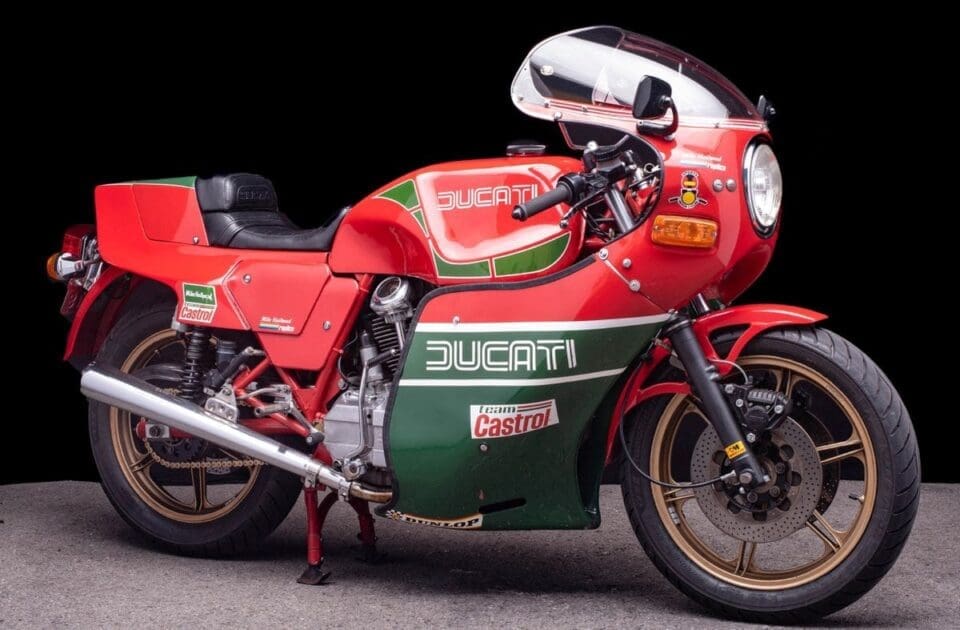
A friend approached me at the 2018 Canadian Vintage Motorcycle Group national rally, saying that one of his buddies was selling an MHR he’d owned since new. Turns out that Frank was born in the Isle of Man and brought the 1982 Mike Hailwood replica with him when he moved to Canada. It had 28,400km on the speedometer.
Frank hadn’t ridden the bike since the late 1990s. Happily it had been well stored. The petrol had been drained, everything had been wiped with an oily rag and it was covered in a heated garage. I rebuilt the carbs, brake calipers and master cylinders; changed the oil and filter, checked the valve clearances, installed new Avon Roadriders and a battery and assembled everything. There are many blemishes and some faded paint, but as it is only original once, I left it all as is. Some like the patina of time, others think I should do a full restoration but, at the moment, I like it.
The basis of the MHR is the 900SS and its bevel-drive, square-case desmo motor which is fed by 40mm Dell’Orto accelerator pump carbs. The starting procedure is different than the 750 and 860. The petrol taps are in different positions, one under the right front of the tank, the other under the left rear. There is no choke. Each carb has a tickler that requires quite a reach. Stand on the right side of the bike, slip your right arm into the fairing, reach forward and back to find the front carb’s tickler. Wrap your left arm over the seat and reach behind the side panel to find the rear carb’s tickler. Hold them down until petrol runs out of the carb’s velocity stack.
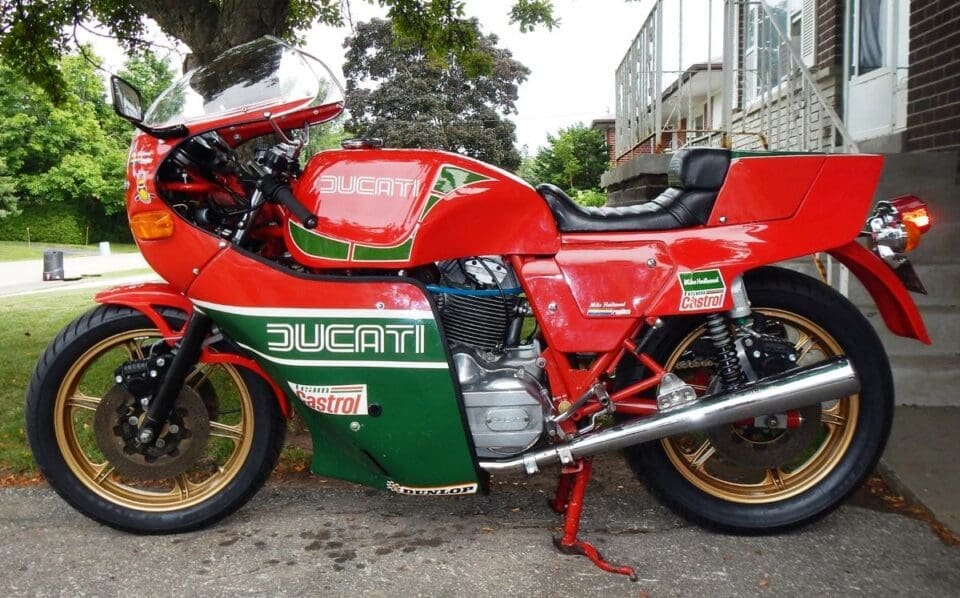
Turn the ignition on, bring the motor to TDC with the kickstart lever, hold the throttle slightly open and give it a good stroke downwards. Be prepared! It can kick back with some force. Usually it starts right then, but if it doesn’t, go back to the ticklers and begin again. It may take two or three tries.
I’ve installed a ‘window’ on the rear cylinder’s bevel gear camcover. It’s fun to watch the oil gush up and once warm, drain back down with the occasional bit splashing around inside. The exhaust note is loud but fabulous, probably just above what your neighbours want to hear. I think that desmo motors sound different from valve spring motors, but I’ve yet to come up with the words to describe it. Perhaps more of a ‘clatter’ or a ‘trill’?
The instrumentation is from the Pantah-era with the big Nippon Denso clocks and warning lights, including the superfluous sidestand light. The switchgear are the same ND pieces used on so many Japanese machines.
Maybe because it has the 900SS frame and the Pantah-style seat, the overall height seems lower than both my 860 and 750, but still needs a stretch to get a leg over the back cover of the seat. The reach to the clip-ons feels even longer than on the 860. Worse, the footpegs are higher making the bend in the knee and the strain on the thigh and hip more pronounced. It is very much a racing crouch. Again, steering lock is practically non-existent.

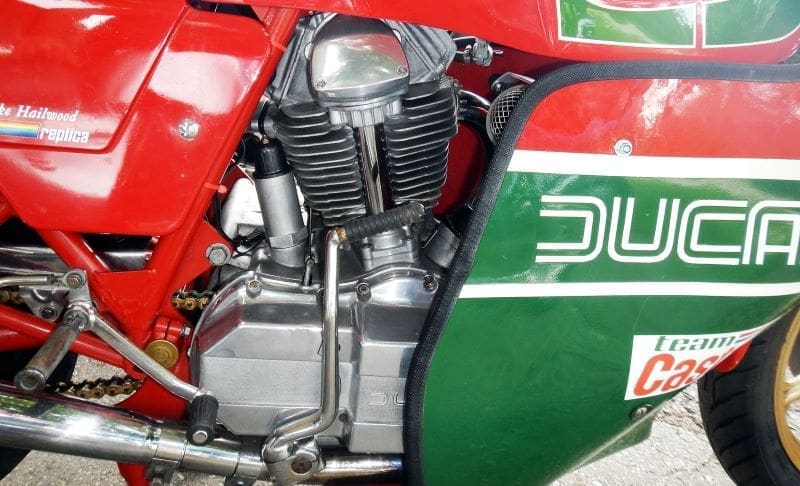
The gears shift on the left with a one-down four-up pattern. The clutch feels surprisingly light and first gear is very tall. It takes a lot of slipping and playing with the throttle to get away smoothly. The speedo shows 30kph by the time the clutch is out. Second pulls nicely, as does third, and now it is showing 100kph! This bike is geared quite high.
The bubble of the windscreen is large and works well to keep the wind from buffeting your helmet. The brakes are every bit as good as the ones on the 860, although the MHR has a rear disc. Even with completely rebuilt calipers and master cylinder, it has a bit of a wooden feel to me. It works but I think I prefer the drums on the others. The seat is surprisingly comfortable given that there isn’t a lot of padding there. The riding position is perfect for going fast, heck, that appears to be the MHR’s purpose! But like the 860, after a half an hour I need a break to stretch my legs.
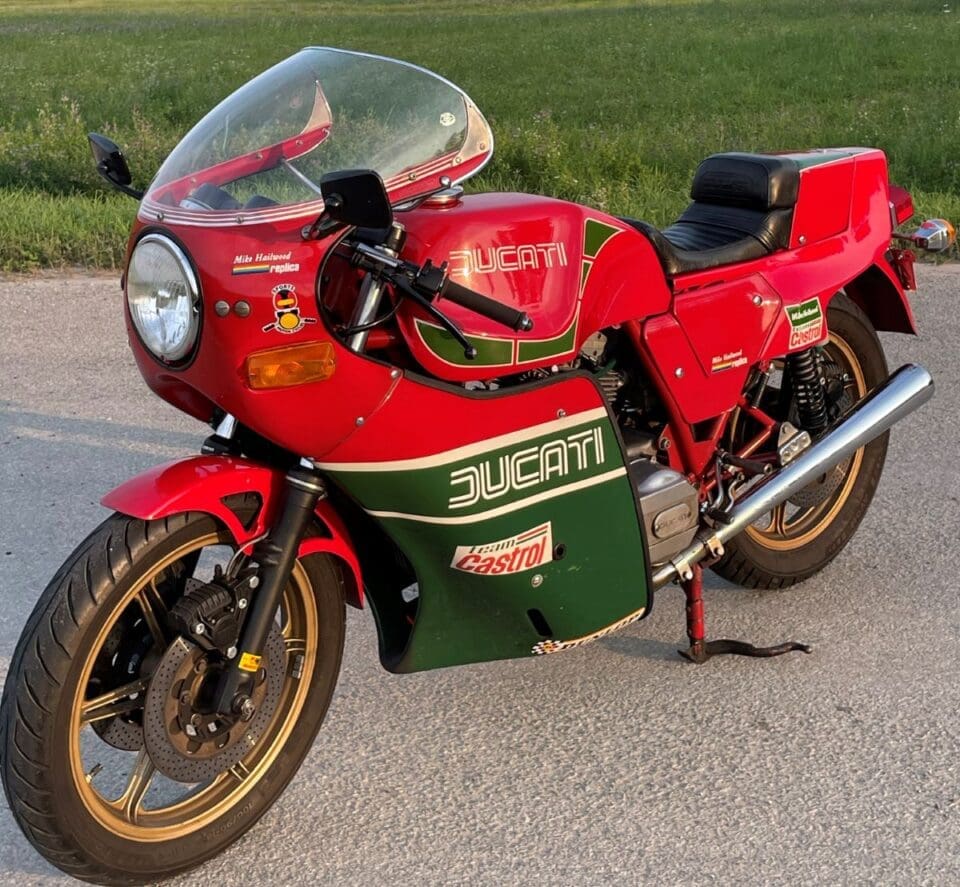
Of course the riding position and the high gearing matter not when out on country roads with little traffic ahead. In fact it all makes perfect sense. The crouch pushes the bike through sweepers and the throttle drives the MHR forward. Any discomfort or even thoughts of discomfort have disappeared far behind – along with any other riders who were trying to keep up.
The MHR was aimed directly at the sportbike crowd. The riding position demands that dedicated attitude, and the chassis and motor fulfil that promise. The MHR feels and is the fastest of my Ducatis. Without meaning to, I’ve seen the speedometer top 220kph with throttle left in hand! All of these bikes shine on an open road with a limitless horizon. Which is my favourite? The last one I rode. After a day’s riding I think to myself ‘wow, that is the best bike I own!’
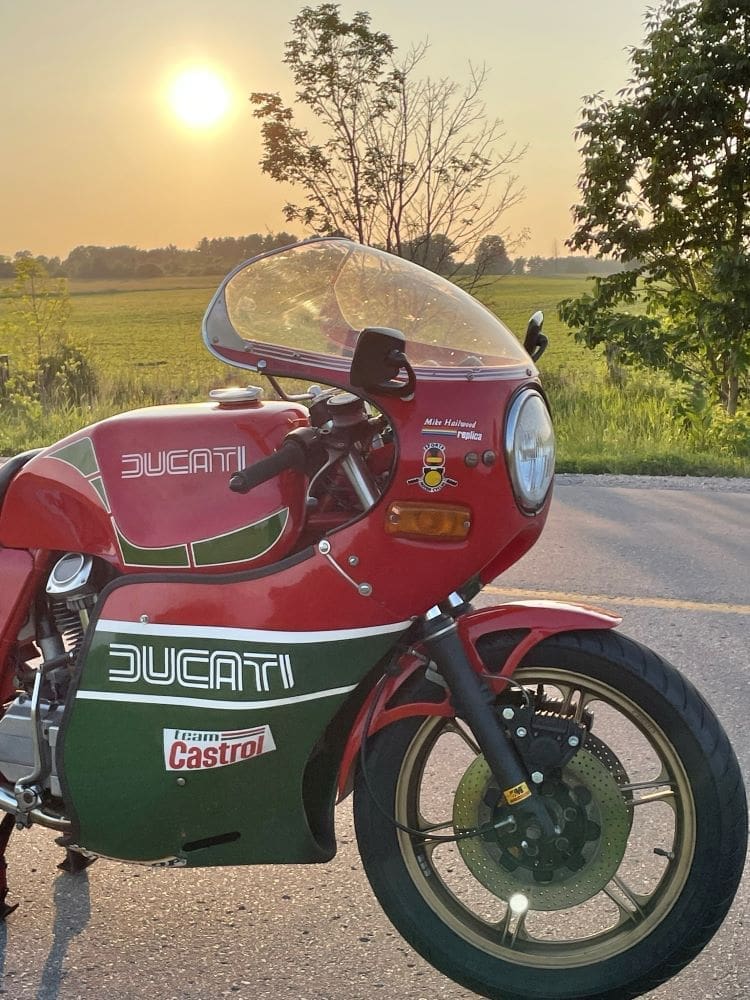
———-
THE FULL STORY of Steven’s bevvy of bevel-drive beauties appears in RC240, Apr24. Find the issue here!
———
Photos by Steven Troupe, Mondo Lulu and John Robb




